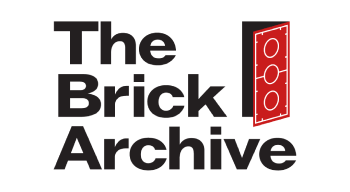This is an old test brick (BASF old logo, mold pip stud, Roman numerals inside). The chemical companies that made the raw material for LEGO used a test mold to determine if their material met all the requirements. These molds were also used to produce test specimens for products that were not used in LEGO elements. This dark red brick seems to be one of those non-LEGO products.
On some of these old red bricks, under the right lighting conditions, you can see that the light is reflected with a metallic, golden color. (And once you know it is there, you can position the light to emphasise it and make a dramatic looking photo like this one.)
Theory 1
The golden reflection could be caused by residues of demoulding aids. In the past, they were either sprayed into the mould or added directly to the material. Since these release agents do not bond with the material, they form on the surface.
…but that theory cannot explain why we seem to find it on red bricks only …
Theory 2
The golden reflection could be caused by the weeping of chemicals due to UV degradation of the plastic.
The additives were never intended to weep out of the plastic, but these bricks are very old and who knows what happened to them during the past 50 years. Also, because this is a test specimen, we do not know if this batch of material had any problems or if it was ever released and used in a product somewhere.
It is possible that the surface layer contains remnants of a cadmium pigment. LEGO used red and yellow plastic with cadmium pigments until 1973. These pigments were commonly used at that time. All the bricks that we have found with this golden reflection are much older. (I have only seen it on actual LEGO bricks that were made from CA plastic. The slotted and hollow brick molds used show that all these bricks were made before 1958, Some of the BASF and Bayer test bricks are a bit more recent, I guess they were probably made in the 1960s.) A quick search of patent information shows that Bayer was actively developing improvements of their cadmium pigments at that time. Possibly, the newer pigments proved to be more stable over time.
We don’t know if there really is a small amount of cadmium on the surface of these bricks, but to be on the safe side collectors of these old parts might want to be cautious when dealing with deteriorating plastic.
—
Note: Modern bricks do not contain cadmium pigment. LEGO has not used materials containing cadmium for a long time.
[Original post and comments on Flickr.]

